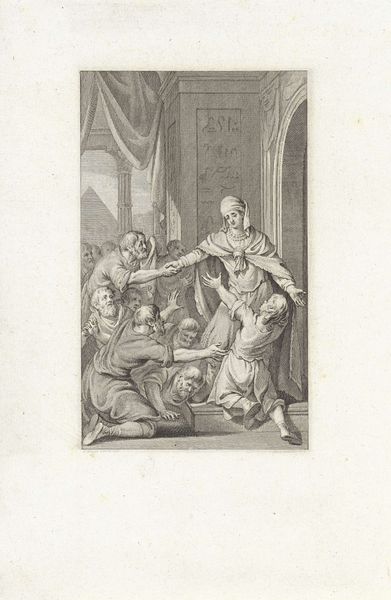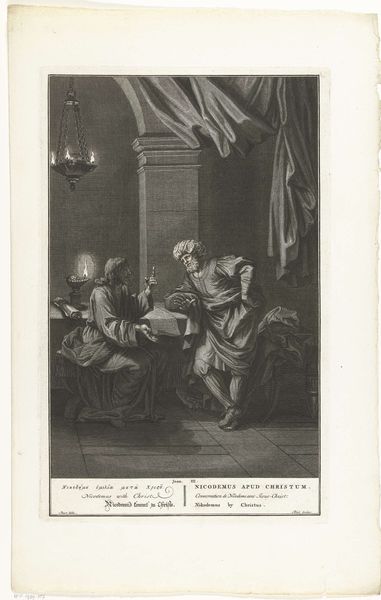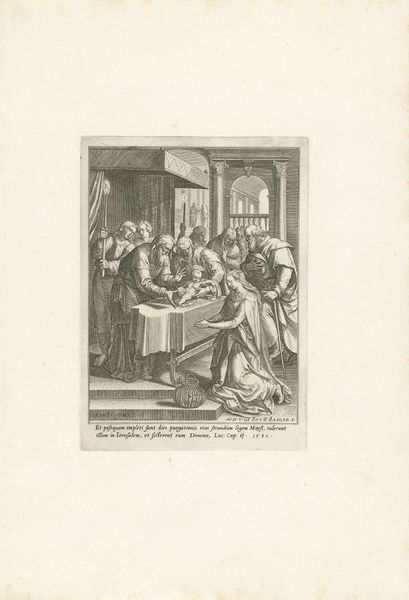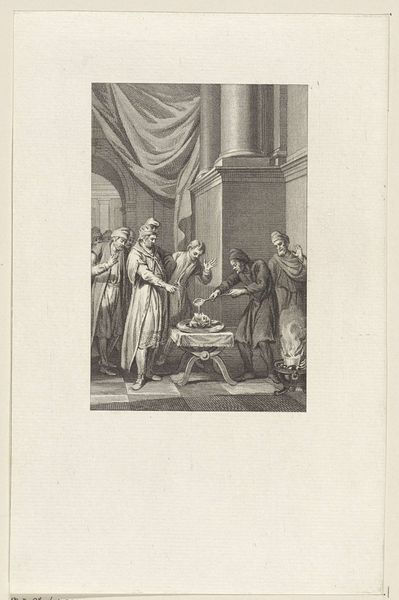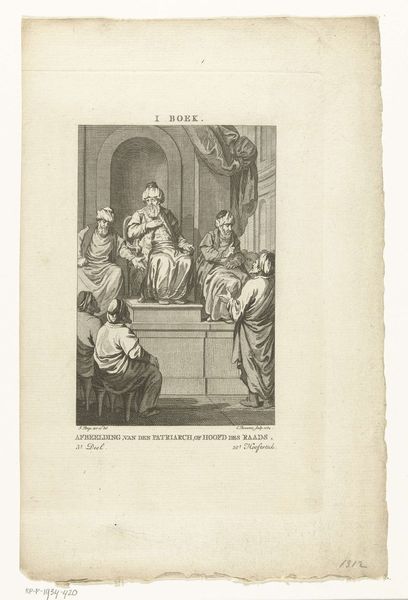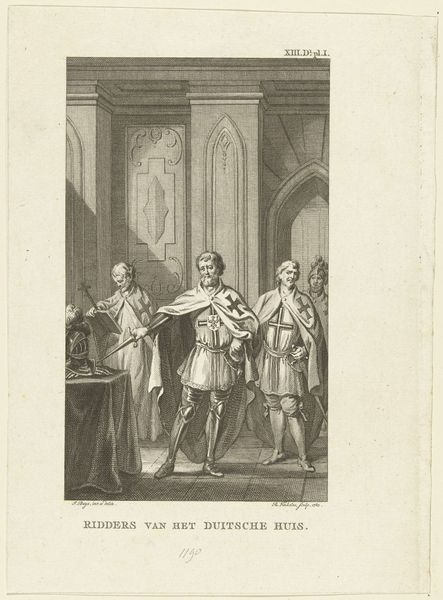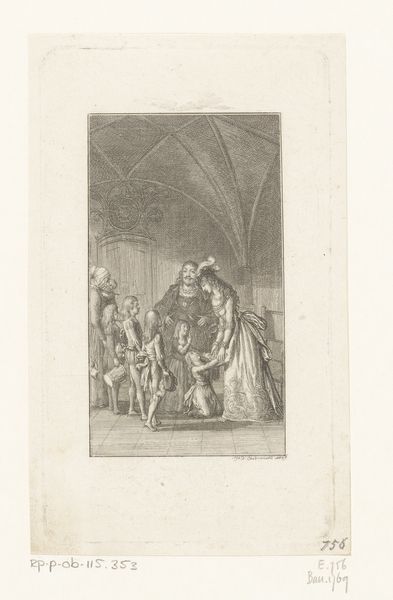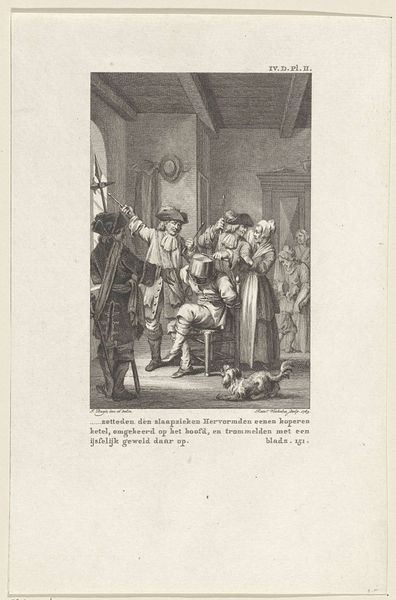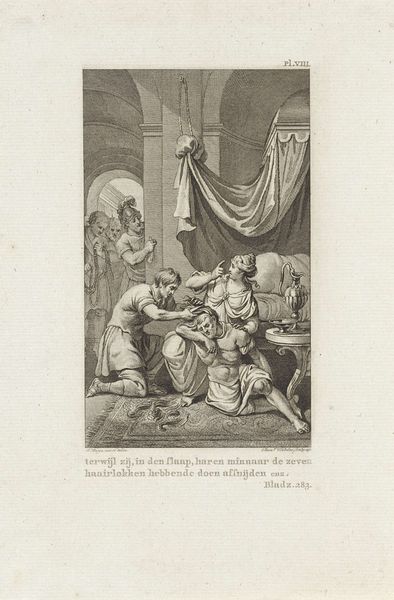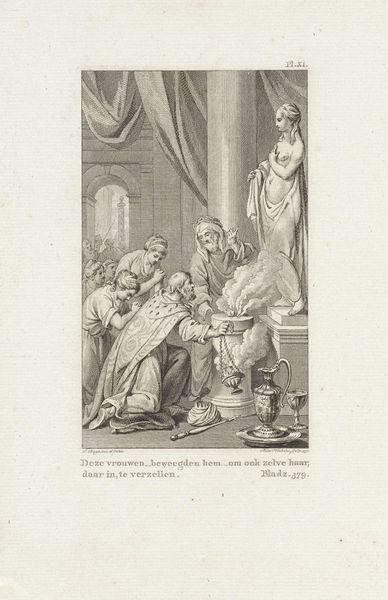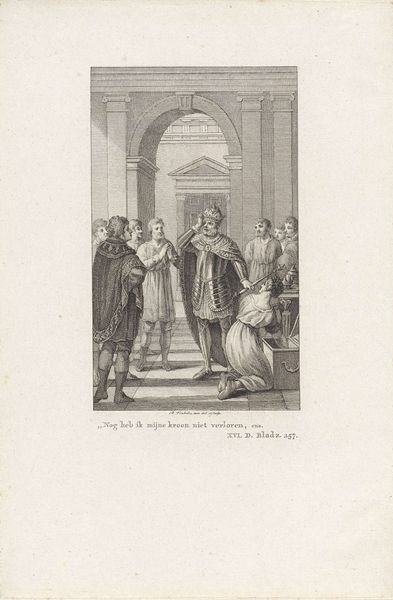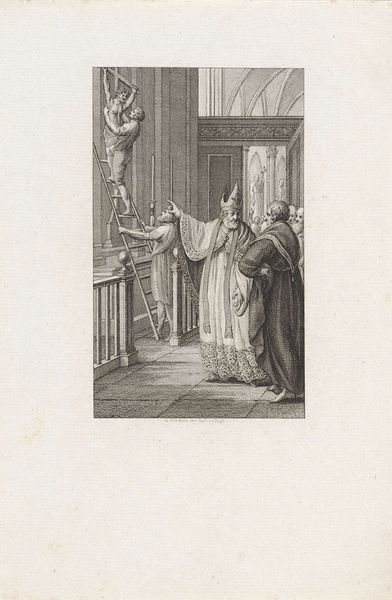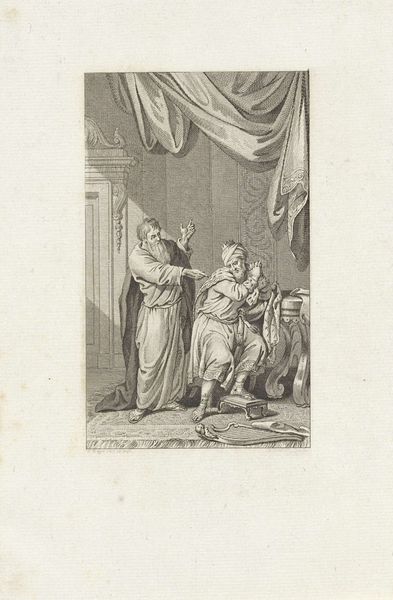
print, engraving
#
portrait
#
neoclacissism
# print
#
old engraving style
#
classical-realism
#
figuration
#
line
#
history-painting
#
engraving
Dimensions: height mm, width mm
Copyright: Rijks Museum: Open Domain
Curator: Let's discuss "Keizer Justinianus kust de voeten van de paus", or "Emperor Justinian Kisses the Feet of the Pope," a print made by Reinier Vinkeles around 1806. It is currently in the Rijksmuseum's collection. What strikes you most about it? Editor: Well, immediately, there's this performative theatricality. A King, a Pope, it looks as though everyone knows their role in a very old story. Dark and a bit forbidding if I am honest! Curator: Yes, there's a distinct formality. This engraving demonstrates the neoclassical obsession with line, prioritizing it over tonal gradations. The social dynamics and labor needed to produce this neoclassical image speak volumes. Vinkeles wasn't merely representing a scene; he was participating in a specific political discourse through accessible imagery, playing with history and the accessibility afforded by printmaking. Editor: Absolutely. I'm intrigued by how such delicate, precise lines capture such a weighty moment of supposed supplication, yet the stagecraft looms largest, a calculated act rather than deep-seated obeisance. I'm wondering, who was this designed for? A devotional tract? Curator: Likely a wide audience through print circulation, but in terms of labor: consider the engraver's skill, the printer's craft, the paper, the distribution networks. Each contributed to its meaning and social life. Neoclassicism was adopted in part, after all, to represent values the revolution had championed, control through form! Editor: So the clean lines and sharp contrasts mirror, and are actually enacting the "reason" they were pursuing? As for the historical staging, you have this dark cavern, stage-right and those peering figures behind the Pope as though even in this manufactured encounter doubt lingers and nothing here can actually be called objective. Curator: Precisely, that doubt might stem from thinking about who gains from the creation and proliferation of images such as this? What social narratives are upheld in its dissemination, for instance? Editor: I can only feel so much historical distance, so I'm wondering, how might the reception have been received? But thanks for contextualizing, I find it deeply moving, even if staged, in that the image's labor and dissemination lives far beyond the scene of an Emperor bowing low. Curator: Indeed. By dissecting the material processes and cultural landscape, we understand this seemingly simple print encapsulates an argument far exceeding its apparent scale.
Comments
No comments
Be the first to comment and join the conversation on the ultimate creative platform.
